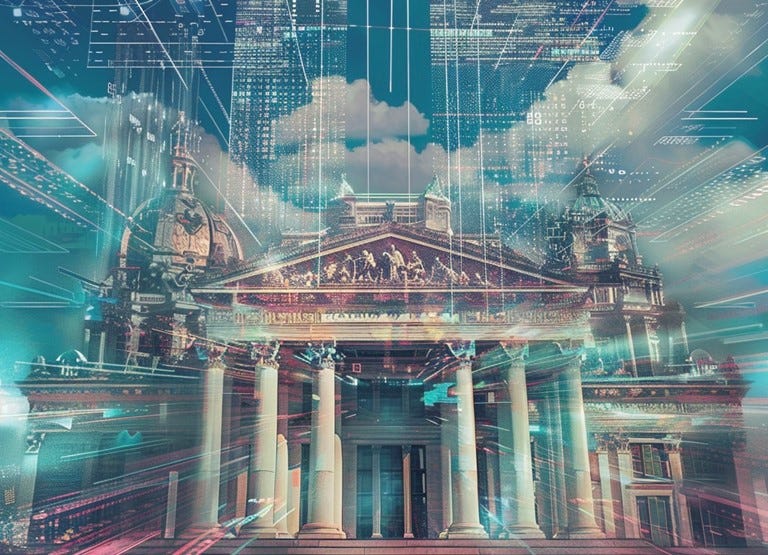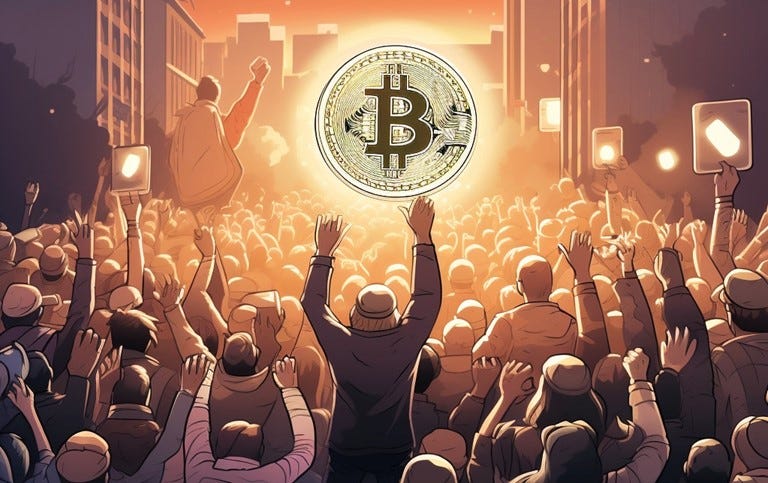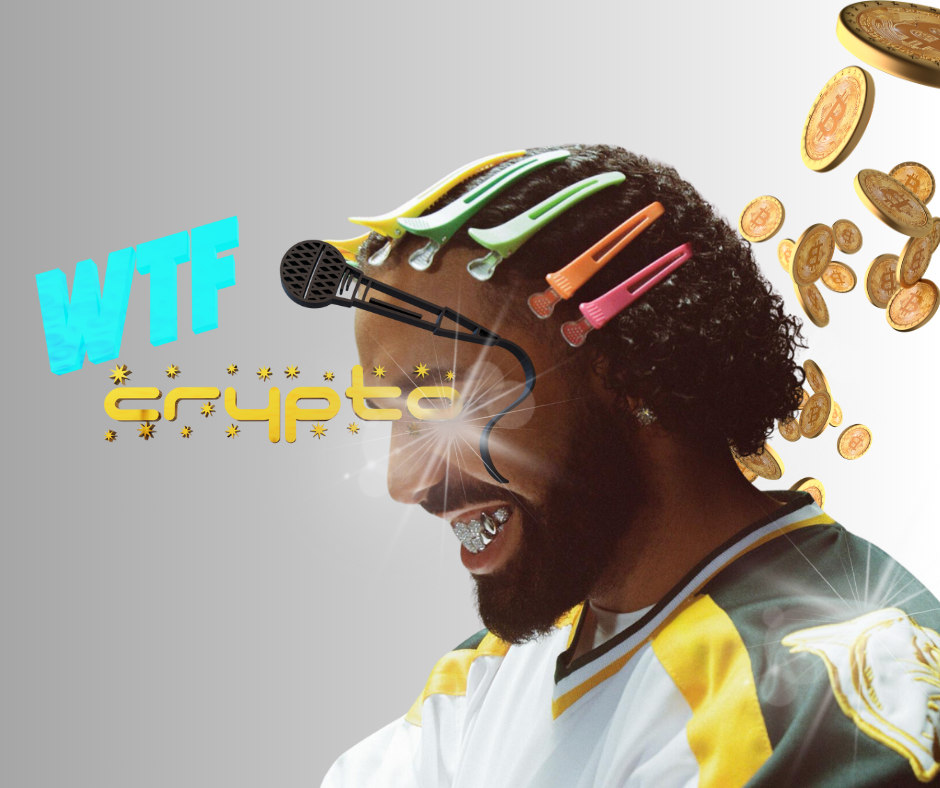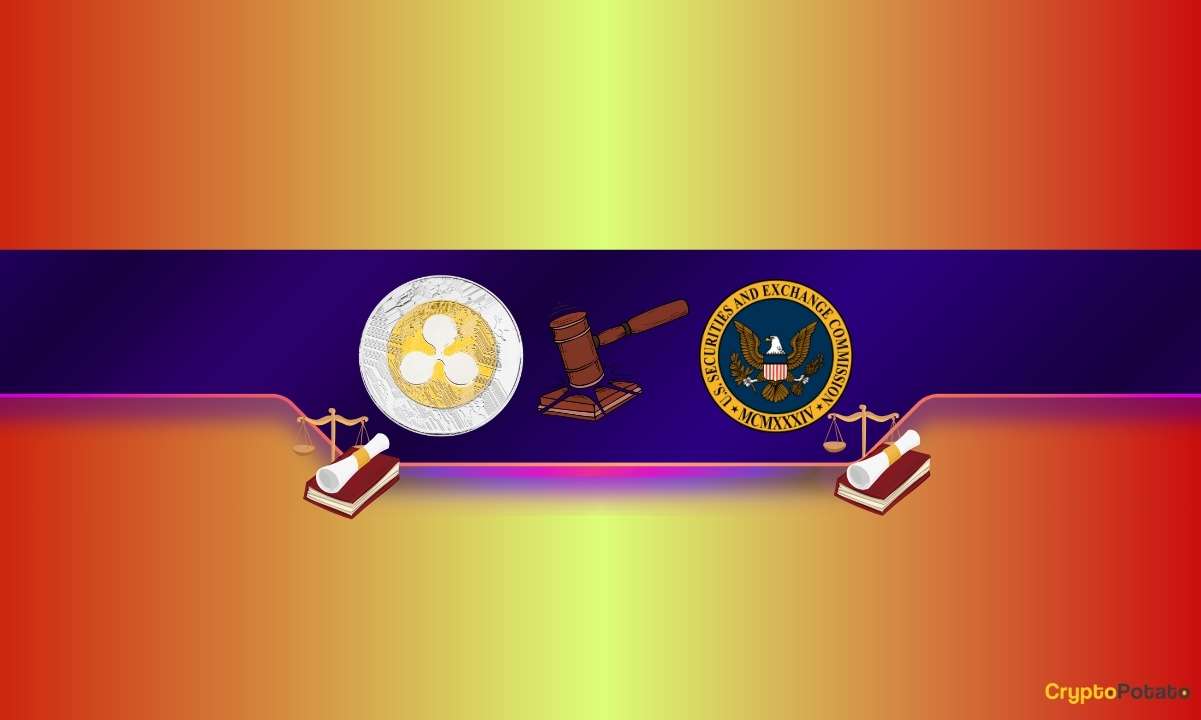
Navigating the Nexus of Finance and Technology
In the ever-evolving landscape of finance, a revolutionary tide is rising at the confluence of established economic frameworks and cutting-edge technological paradigms. The worlds of traditional finance (TradFi) and decentralized finance (DeFi) are not on a collision course; rather, they are moving toward a powerful synergy that promises to reshape the very essence of monetary interaction.
This integration heralds a future where the strengths of traditional banking systems and the innovative spirit of blockchain-based platforms combine to foster a more inclusive, efficient, and resilient financial environment. Here, the tried-and-tested practices of TradFi merge with the decentralized ethos of DeFi, creating a new paradigm where each complements the other, addressing the limitations and amplifying the possibilities.
The journey ahead is one of convergence and coexistence, where prudent oversight paves the way for innovation, and user-centric design ensures that technology serves the greater good.

Technology Integration
Gradual Transition
The existing financial ecosystem is a robust tapestry woven over decades, intertwined with intricate financial infrastructure, specialized institutional roles, and a complex regulatory landscape adhering to international standards. This system is bolstered by a vast user base whose behaviors and expectations have been shaped over time. An abrupt leap to a fully decentralized Web3 or DeFi is not just impractical — it overlooks the foundational value of what’s already in place.
However, this isn’t a stance against innovation. On the contrary, the financial sector, along with regulatory bodies and governments, is poised to embrace the enhancements that Web3 and related technologies promise — be it efficiency, cost-savings, or groundbreaking applications that could revitalize market operations. The most feasible path forward is one of convergence: a balanced blend of Web2 and TradFi’s reliability with the pioneering spirit of Web3 and DeFi.
Interoperability
Interoperability stands as a cornerstone for this evolutionary march. By weaving together the fabric of traditional and distributed ledgers, we can craft a system where each complements the other, leveraging their respective strengths. On one hand, the security and proven governance of traditional ledgers; on the other, the innovative and efficient solutions of distributed ledgers. This harmonious integration is not just about coexistence but about creating a synergistic ecosystem that amplifies the efficiency and effectiveness of financial services, paving the way for an era where the old and the new not only meet but thrive together.

Regulatory Environment
Balanced Oversight
As the frontier of digital assets expands at an unprecedented pace, regulators are navigating this new territory in real-time. The hybrid model stands as a beacon of measured progress, offering a regulatory respite — a chance to thoughtfully shape frameworks that embrace technological advances while ensuring that the spirit of innovation continues to burn bright. Leading the charge, pioneering regulatory authorities are not just observers but active participants, spearheading initiatives like Central Bank Digital Currencies (CBDCs). These trailblazers are harnessing the unique attributes of Web3, such as programmability and interoperability, to reimagine and refine the efficiency and cost-effectiveness of financial transactions and to unlock novel investment avenues. The HKMA-driven eHKD and the to-be-regulated stablecoins are typical examples.
Consumer Protection
In this era of transition, safeguarding consumers remains paramount. By integrating aspects of traditional finance, we preserve the tried-and-tested protection mechanisms that have been the industry’s guardians. As we tread into the realm where TradFi and DeFi converge, we can anticipate more articulate regulatory provisions designed to safeguard market participants. These protections will ensure that as consumers step into the world of innovations, they are well-informed, alert to the nuances, and conscious of the risks inherent to these new financial instruments. This careful stewardship is pivotal, not only for consumer safety but for nurturing the trust and confidence that will be the bedrock of this financial evolution.

Market Stability
Risk Management
The fusion of established and emerging financial systems offers a strategic approach to risk management in the digital age. By integrating DeFi’s innovation with the rigorous due diligence protocols of TradFi, we can bolster the resilience of financial services. The maturation of risk management strategies will be in lockstep with the progress of DeFi and Web3, the growing sophistication of market participants, and the evolving expertise of regulators. This interplay will be crucial in fostering an environment where new technologies can flourish securely and responsibly.
Trust and Confidence
In a financial ecosystem that marries legacy with novelty, trust is the currency of progress. Blending the new with the familiar can assuage the apprehensions of users wary of fully decentralized models. By maintaining recognizable interfaces and the involvement of established institutions, we lay the groundwork for a gradual and confident transition to innovative technologies. This effort is complemented by strengthening regulatory frameworks encompassing anti-money laundering (AML), know your customer (KYC) protocols, anti-fraud measures, and a focus on investor protection. Through education and reinforced privacy and security measures, we cultivate an ecosystem where trust is not just expected but assured.

User Adoption
Learning Curve
The path to widespread adoption of new technologies is paved with education. A synergistic approach where Web2 and TradFi act as gateways to Web3 and DeFi can significantly flatten the learning curve for newcomers. As the market introduces more innovations that are not only groundbreaking but also reliable and regulated, the veil of complexity lifts, fostering an environment ripe for increased awareness and enhanced trust among users.
User Experience
The amalgamation of traditional and modern systems promises a more intuitive user experience. The marriage of Web2’s operational simplicity and the distinct transparency and control offered by Web3 paves the way for a user-centric financial environment. True innovation lies not just in technological breakthroughs but in their ability to address enduring market challenges and improve the end-user’s daily financial interactions. The goal is a seamless, accessible, and empowering financial landscape that resonates with and is responsive to, the user’s needs.

Embracing the Future: A Convergence for Empowerment
As we stand at the intersection of tradition and innovation, we are witnessing the dawn of a new financial era — one that promises empowerment and inclusion through the convergence of established and emerging technologies. The harmonious blend of Web2 and Web3, TradFi and DeFi, is not just a vision but an impending reality that beckons with the promise of a more robust, equitable, and efficient financial ecosystem.
This journey toward convergence is a testament to our collective resilience and adaptability. It is a narrative of progress, where balanced oversight and consumer protection work in concert with risk management and user adoption to create a financial landscape that is both familiar and revolutionary.
As we embrace this paradigm shift, we are not just moving toward a future of financial innovation; we are crafting it with every step we take. The synergy between the old and the new will bring forth a financial world that is more accessible, transparent, and trustworthy — a world where every individual has the opportunity to participate in and benefit from the full spectrum of financial services.

References
- 'DeFi' and 'TradFi' Must Work Together
- Web2 vs Web3: Why the Shift to a New Paradigm Is Inevitable | HackerNoon
- Evolution and Coexistence of Web 2.0 and Web 3.0 - DZone
Web2 and Web3, DeFi and TradeFi: A Future of Co-existence and Convergence was originally published in The Dark Side on Medium, where people are continuing the conversation by highlighting and responding to this story.

 4 weeks ago
25
4 weeks ago
25






 English (US) ·
English (US) ·